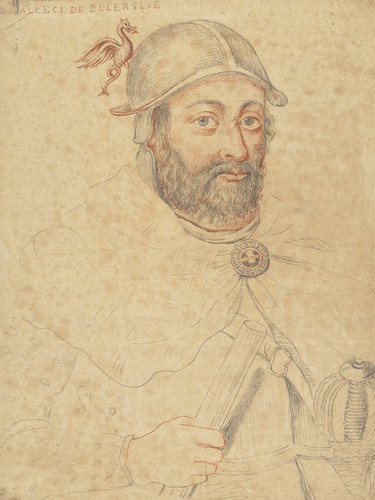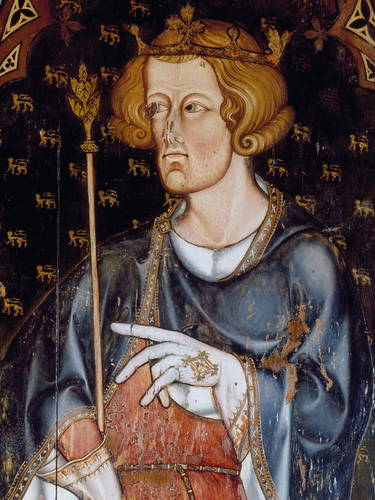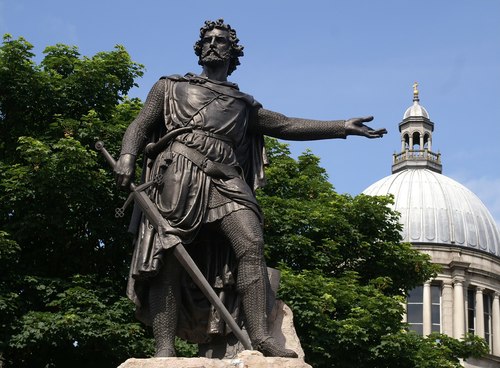Noiser
Who Was William Wallace?
Play Short History Of... William Wallace
More than 700 years after his death, the blockbuster movie Braveheart made William Wallace a worldwide household name. But who was the real man behind the Hollywood myth?

Early life
Thanks in large part to the 1995 film Braveheart, there is a common misconception that William Wallace was a commoner who rose to power against the odds. This, however, is not the case. Born around 1270, he was the son of a minor landowner and considered part of the lesser nobility.
His privileged upbringing gave young William the opportunity to learn skills crucial for his future career as a revolutionary, such as languages, the art of public speaking and combat.
The Rise of William Wallace
In 1286, the Scottish King Alexander III died. With the throne up for grabs (Alexander did not leave an heir), King Edward of England decided to make a move. In 1296, he sent troops to Scotland to try and seize control. The British army sacked the town of Berwick-upon-Tweed, killing 7,000 people. To stop the slaughter, Edward forced the Scottish nobility to pledge allegiance to him by signing a document known as the Ragman Roll. Approximately 1,900 nobles made the pragmatic decision to sign the document and submit to the English king.
However, there were a few names conspicuously absent from the list, and one of them was William Wallace.
For this act of defiance, the 27-year-old was proclaimed an outlaw and became a fugitive. Wallace, however, did not simply go into hiding. The charismatic young man began amassing a following of like-minded Scottish patriots, and it wasn’t long before he and his men decided to strike back against English rule.

First Act of Rebellion
In May 1297, William Wallace led an uprising against the English-held town of Lanark. Their goal was to kill the sheriff, Englishman William Heselrig, but the raid failed, and they were forced to retreat. Wallace, however, would not accept defeat so easily.
Later that same night, Wallace snuck into Heselrig’s bedchamber and slaughtered him in his sleep. His leadership in what came to be known as the “Action at Lanark" secured Wallace’s status as a key figure in the First War of Scottish Independence.
Uprisings
Now a prominent Scottish figurehead, Wallace organised a local army, leading attacks against English strongholds between the Forth and Tay Rivers. In response, King Edward sent troops to deal with the Scottish rebels. Though the English forces greatly outnumbered them, the Scots were able to use the familiar terrain to their advantage.
On September 11th, 1297, the English confronted Wallace and his small army at the Forth River. The two forces were positioned on opposite sides of the river, and the English had to pass over a narrow bridge to reach Wallace and his men. This created a funnelling effect, and the Scots were able to massacre the English as they crossed the bridge, scoring them an unlikely and crushing victory.
Afterwards, Wallace was knighted and proclaimed the guardian of the kingdom.
But his success wouldn’t last long. In July of 1298, King Edward marched to Scotland with the largest army ever to go north. Their mission? Defeat William Wallace at all costs.
The two sides met at Falkirk on July 22nd. Wallace was once again outnumbered, but this time there was no miracle to be had. The Scots suffered a crushing defeat. With his military reputation in shambles, William Wallace resigned his guardianship.
The rebellion he had once led went on until 1304, when Scottish nobles finally capitulated to English rule. Except William Wallace, of course, who refused to recognise King Edward as the ruler of Scotland to the bitter end. As a result, he was forced into hiding.
Capture and Execution
King Edward would not rest until William Wallace was captured. He put a significant bounty on his head, and it wasn’t long before a nobleman named Sir John Monteith gave the former war hero up. Wallace was captured in Glasgow in 1305 and taken to London.
Wallace’s execution on 23rd August 1305, at the age of 35, was barbaric. First, he was tied to a horse and dragged six miles from Westminster to Smithfield’s Bartholomew Fair. Then, he was hung, drawn and quartered.
Clearly, it's designed to strike fear. Many Scots would have realised that their enemy was not showing any signs of peace or any sense of reconciliation. So, for many, it would have signalled fear, and it would also have led to anger.
Graeme Morton, Professor of Modern History and Director of the Centre for Scottish Culture at the University of Dundee.
Legacy
Wallace died horribly, and he died young, but his legacy lives on in national pride and poetry. His image is immortalised in innumerable monuments throughout Scotland.
 William Wallace’s exploits lasted only a handful of years, and the legend that surrounds him has largely overshadowed the reality of his life. However, in death, he has become something far greater than the sum of his exploits. He is a symbol not just of Scotland’s fierce fight for independence but for freedom and justice the world over.
William Wallace’s exploits lasted only a handful of years, and the legend that surrounds him has largely overshadowed the reality of his life. However, in death, he has become something far greater than the sum of his exploits. He is a symbol not just of Scotland’s fierce fight for independence but for freedom and justice the world over.
There’s a strong sense of the underdog – that he was fighting for the Scottish people. It's why, in Scotland, he becomes such a folk hero and so important to Scotland's national history.
Graeme Morton, Professor of Modern History and Director of the Centre for Scottish Culture at the University of Dundee.